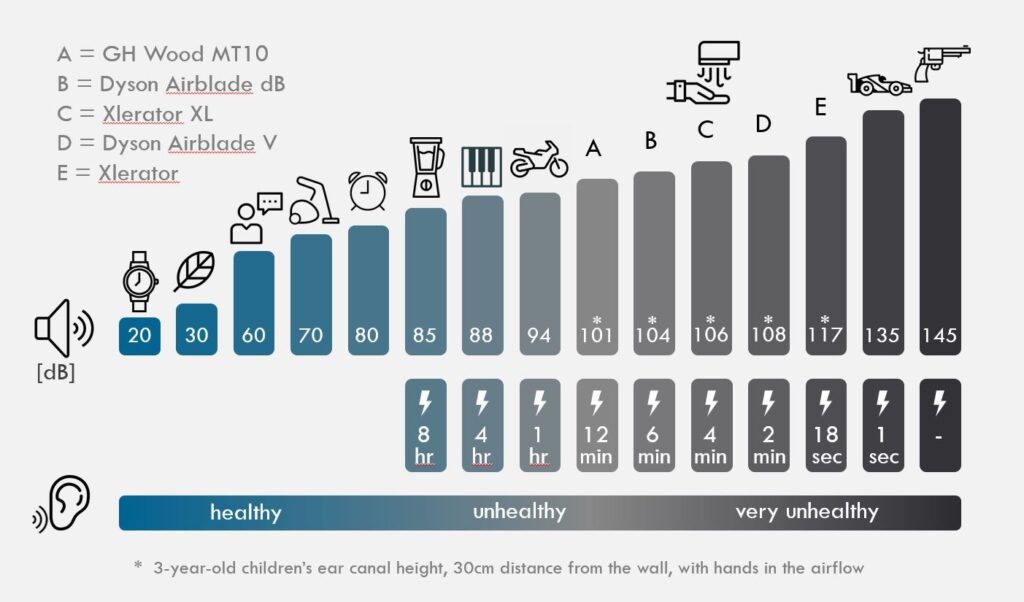
Pay special attention to the section with the hand dryer icon.
A, B, C, D, and E show where 5 different hand dryers rank on the decibel scale.
In today’s fast-paced world, hand dryers have become a common sight in public restrooms worldwide.
These modern devices offer convenience and hygiene benefits, eliminating the need for paper towels and reducing waste.
However, what many people are unaware of is the potential danger that hand dryers pose to our hearing health.
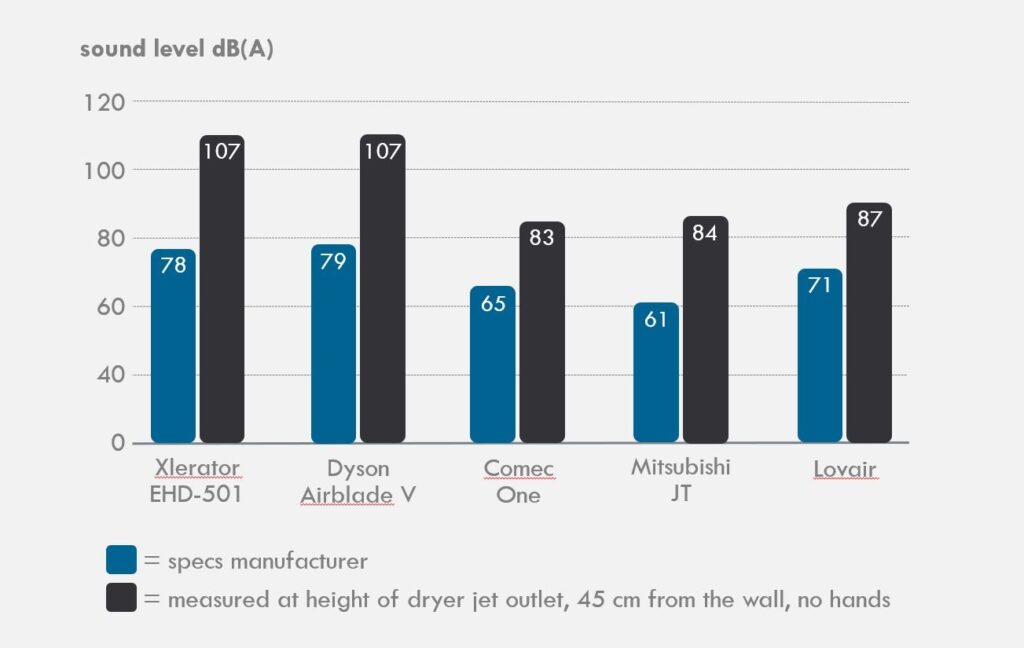
Chart also shows where the hand dryers actually register on the dB scale.
There is a notable difference in results.
The Decibel Dilemma
The average hand dryer emits sound at a decibel level ranging from 80 to 100 decibels, depending on the model and brand.
To put this into perspective, prolonged exposure to sounds exceeding 85 decibels can lead to hearing damage.
The World Health Organization (WHO) suggests that sound levels of 85 decibels or above should not be endured for more than eight hours a day, and even short bursts at these levels can have harmful consequences.
Considering that hand dryers operate for approximately 30 seconds to a minute and are often located in enclosed spaces, the noise exposure can become a significant concern.
When people use restrooms multiple times a day, the cumulative exposure to high decibel levels can lead to hearing problems over time.
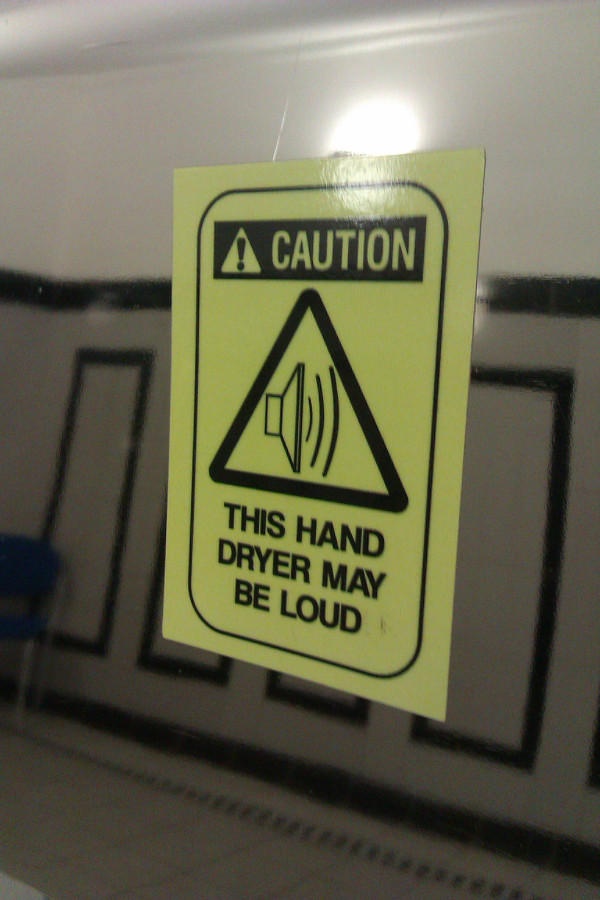
Who is at Risk?
While hand dryers pose a potential risk to everyone who uses public restrooms, some individuals may be more susceptible to hearing damage.
Children, for instance, have smaller ear canals, making them more vulnerable to noise-induced hearing loss.
To add to this, people with pre-existing hearing conditions or sensitivities may experience increased problems when exposed to the loud noise of hand dryers.
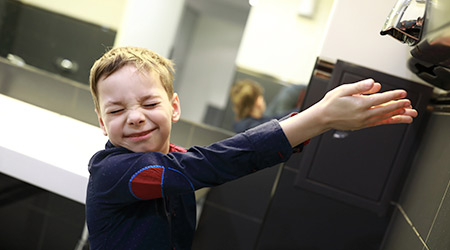
Preventing Hearing Loss
To buffer the dangers of hand dryers on hearing health, several steps can be taken:
- **Use ear protection**: Carrying earplugs or noise-cancelling earphones can help reduce the impact of loud hand dryers.
- **Choose quieter dryers**: Some newer hand dryer models are designed to be quieter. Look for restroom facilities that prioritize quieter, more hearing-friendly devices.
- **Advocate for change**: Encourage businesses and public facilities to invest in quieter hand dryers and provide hearing protection options in restrooms.
- **Limit exposure**: Whenever possible, opt for paper towels or air drying instead of hand dryers to reduce your noise exposure.
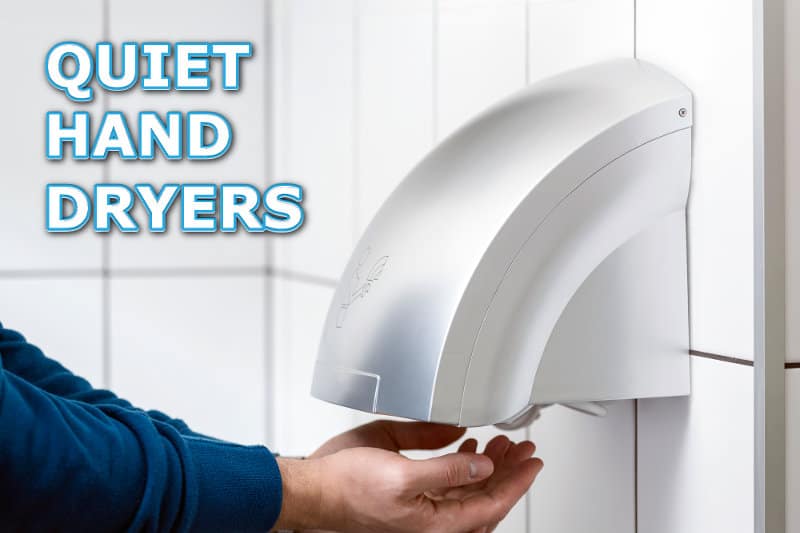
While hand dryers may seem like a harmless modern convenience, their impact on our hearing health should not be underestimated.
The risk of noise-induced hearing loss from prolonged exposure to these devices is a real concern, especially for children and individuals with pre-existing hearing conditions.
By raising awareness about this often overlooked issue and by taking proactive measures to protect our hearing, we can ensure that hand dryers remain a convenient and safe option in public restrooms without hurting our long-term auditory health.
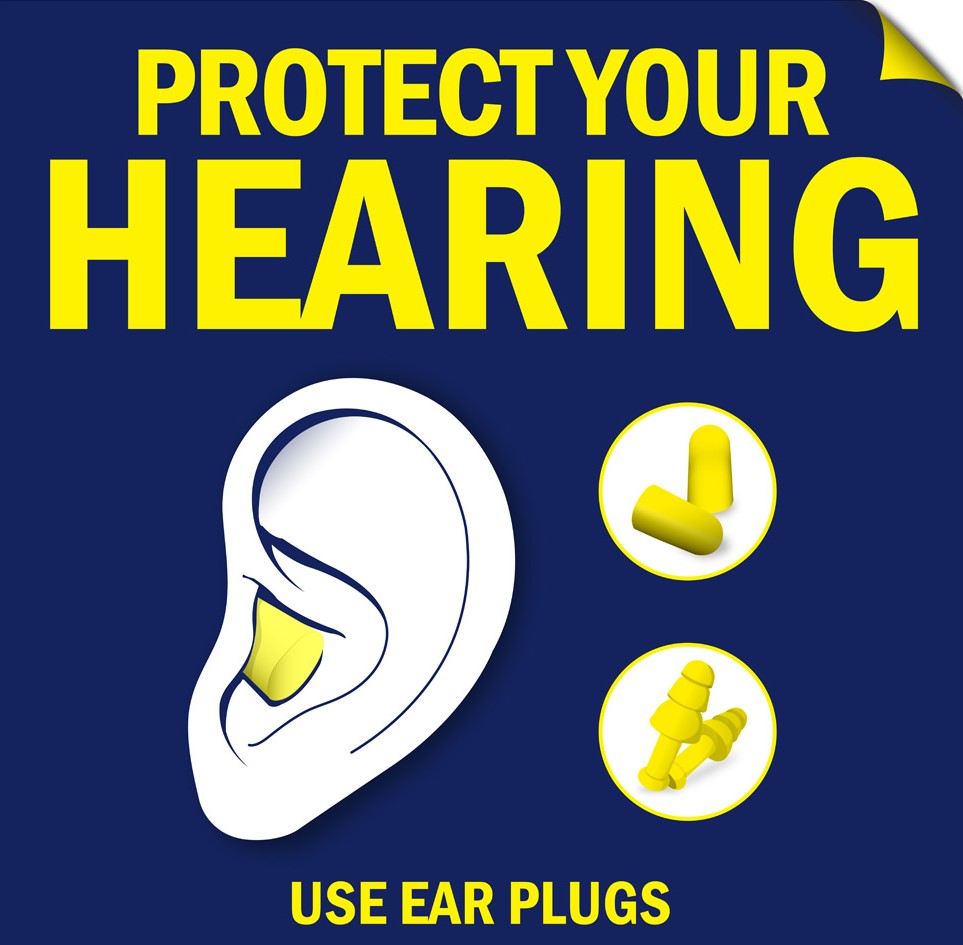


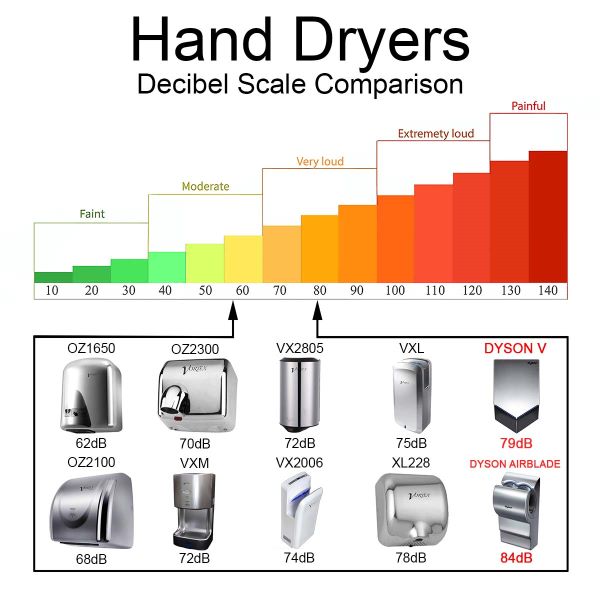
Thanks, I have just been looking for information about this subject for a long time and yours is the best I’ve discovered till now!
Great article! I had never even thought of hand dryers as a hazard! I will be a lot more carefull now
Many of the topics addressed in the blog section are on things I had never even thought about. Thanks for finding interesting info to share!
Your insights are enlightening.